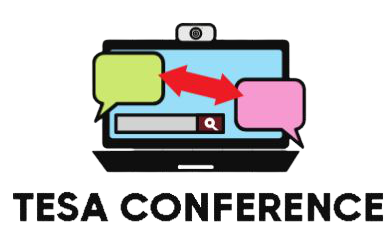At its Search On occasion right this moment, Google launched a number of new options that, taken collectively, are its strongest makes an attempt but to get folks to do greater than sort a couple of phrases right into a search field. By leveraging its new Multitask Unified Mannequin (MUM) machine studying know-how in small methods, the corporate hopes to kick off a virtuous cycle: it would present extra element and context-rich solutions, and in return it hopes customers will ask extra detailed and context-rich questions. The top outcome, the corporate hopes, shall be a richer and deeper search expertise.
Google SVP Prabhakar Raghavan oversees search alongside Assistant, advertisements, and different merchandise. He likes to say — and repeated in an interview this previous Sunday — that “search isn’t a solved downside.” Which may be true, however the issues he and his crew are attempting to resolve now have much less to do with wrangling the online and extra to do with including context to what they discover there.
For its half, Google goes to start flexing its potential to acknowledge constellations of associated subjects utilizing machine studying and current them to you in an organized method. A coming redesign to Google search will start exhibiting “Issues to know” containers that ship you off to completely different subtopics. When there’s a bit of a video that’s related to the overall matter — even when the video as an entire isn’t — it would ship you there. Buying outcomes will start to point out stock accessible in close by shops, and even clothes in several kinds related along with your search.
In your half, Google is providing — although maybe “asking” is a greater time period — new methods to go looking that transcend the textual content field. It’s making an aggressive push to get its picture recognition software program Google Lens into extra locations. It is going to be constructed into the Google app on iOS and in addition the Chrome net browser on desktops. And with MUM, Google is hoping to get customers to do extra than simply establish flowers or landmarks, however as a substitute use Lens on to ask questions and store.
“It’s a cycle that I believe will maintain escalating,” Raghavan says. “Extra know-how results in extra person affordance, results in higher expressivity for the person, and can demand extra of us, technically.”
These two sides of the search equation are supposed to kick off the subsequent stage of Google search, one the place its machine studying algorithms change into extra distinguished within the course of by organizing and presenting data immediately. On this, Google efforts shall be helped massively by latest advances in AI language processing. Due to programs generally known as massive language fashions (MUM is one among these), machine studying has received significantly better at mapping the connections between phrases and subjects. It’s these expertise that the corporate is leveraging to make search not simply extra correct, however extra explorative and, it hopes, extra useful.
One in all Google’s examples is instructive. You could not have the primary concept what the elements of your bicycle are referred to as, but when one thing is damaged you’ll have to determine that out. Google Lens can visually establish the derailleur (the gear-changing half hanging close to the rear wheel) and moderately than simply provide the discrete piece of knowledge, it would mean you can ask questions on fixing that factor immediately, taking you to the data (on this case, the superb Berm Peak Youtube channel).
The push to get extra customers to open up Google Lens extra usually is fascinating by itself deserves, however the larger image (so to talk) is about Google’s try to collect extra context about your queries. Extra difficult, multimodal searches combining textual content and pictures demand “a wholly completely different degree of contextualization that we the supplier should have, and so it helps us tremendously to have as a lot context as we will,” Raghavan says.
We’re very removed from the so-called “ten blue hyperlinks” of search outcomes that Google offers. It has been exhibiting data containers, picture outcomes, and direct solutions for a very long time now. At this time’s bulletins are one other step, one the place the data Google offers isn’t just a rating of related data however a distillation of what its machines perceive by scraping the online.
In some instances — as with buying — that distillation means you’ll probably be sending Google extra web page views. As with Lens, that pattern is vital to keep watch over: Google searches more and more push you to Google’s personal merchandise. However there’s an even bigger hazard right here, too. The truth that Google is telling you extra issues immediately will increase a burden it’s all the time had: to talk with much less bias.
By that, I imply bias in two completely different senses. The primary is technical: the machine studying fashions that Google desires to make use of to enhance search have well-documented issues with racial and gender biases. They’re educated by studying massive swaths of the online, and, in consequence, have a tendency to select up nasty methods of speaking. Google’s troubles with its AI ethics crew are additionally properly documented at this level — it fired two lead researchers after they printed a paper on this very topic. As Google’s VP of search, Pandu Nayak, informed The Verge’s James Vincent in his article on right this moment’s MUM bulletins, Google is aware of that every one language fashions have biases, however the firm believes it could actually keep away from “placing it out for folks to eat immediately.”




